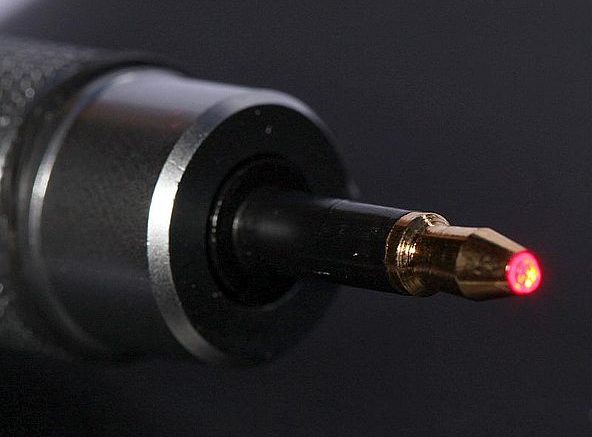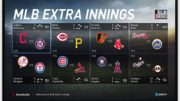Well, if you believe DIRECTV… it might be. But there are other voices out there that may differ.
What is optical audio?
Optical audio is the term for a fiber optic connection between devices that carries sound. You’ve probably seen that red-glowing port on the back of some of your equipment. You might even use it to connect to a sound bar. It’s properly called TOSLINK.
TOSLINK, otherwise known as optical audio, started life as “Toshiba Link,” a way for Toshiba-branded CD players to connect to audio systems. Of course this was back in 1983 when people cared about CD players, and back when you could buy something from Toshiba with a fairly straight face. It was one of the first formats to allow a purely digital transfer from one home theater device to another, and it was also one of the first formats to allow more than two channels on a single cable.
TOSLINK was not only reknowned, it was cool because it combined fiber and laser technologies in a way that 1980s kids thought reminded them of the future. It wasn’t perfect… even though fiber optics can go thousands of feet TOSLINK cables usually can’t because of cheap manufacturing. Still, TOSLINK was dominant well through the 1990s and 2000s.
And then, the coolness just couldn’t carry it anymore. Sony and Philips, both big names in their day, had a different standard: The Sony/Philips Digital Interchange Format, or S/PDIF. S/PDIF, or coaxial audio as it was more commonly called, used digital encoding over a plain old RCA cable to do the same thing that TOSLINK did with lasers and fiber optics. It may not have been as sexy, but it was usually cheaper to make after about 2005 when computer chips were able to process the signal easily. In the mid-2000s it was common for A/V equipment to have both TOSLINK and S/PDIF as choices, as both were relatively inexpensive.
And then, HDMI happened.
For consumers, HDMI was a dream come true — a single cable that carried HD video and enough audio channels for most people. Never mind the whole thing where HDMI is laden with copy protection features, it just didn’t matter. It took a few years for HDMI to really catch on but even audiophiles couldn’t deny the appeal of one digital cable instead of (up to) 9 analog RCA cables. HDMI also had a new feature called ARC (Audio Return Channel) where the sound could travel backwards from a TV to an audio receiver, making it even easier to connect.
When HDMI got its act together, the writing was on the wall for digital audio. That’s when manufacturers like DIRECTV figured out that they didn’t always need to provide both types of outputs. Generally people would use HDMI cables for newer gear, with TOSLINK being used for older gear. Starting in about 2010, DIRECTV phased out TOSLINK on some devices to save space and cost. Most of the company’s products don’t have TOSLINK to this day. HDMI switching does the heavy lifting now, and most consumers don’t mind. There are still vestigial coax audio connectors on some DIRECTV equipment but they’re rarely used.
In the meantime, both TOSLINK and S/PDIF aren’t capable of carrying the new digital audio formats like Dolby Atmos. That’s what audiophiles really want, so those folks have left those cables back in the 1980s where they probably belong. Lower-priced soundbars still use TOSLINK because it’s easy to implement for a sound bar. But really if you want a sound system you should be looking at HDMI at this point.
Get the accessories you need
Do you need cables for an older TOSLINK or coax audio? What about or anything else to make the most of your digital life? Shop at Solid Signal! We have tens of thousands of hard-to-find parts at the best prices. If you need a helping hand, call for free support! We have real experts in our Novi, MI offices ready to help. Call 888-233-7563 during East Coast business hours. If it’s after hours, fill out the form below and we’ll get right back to you.





